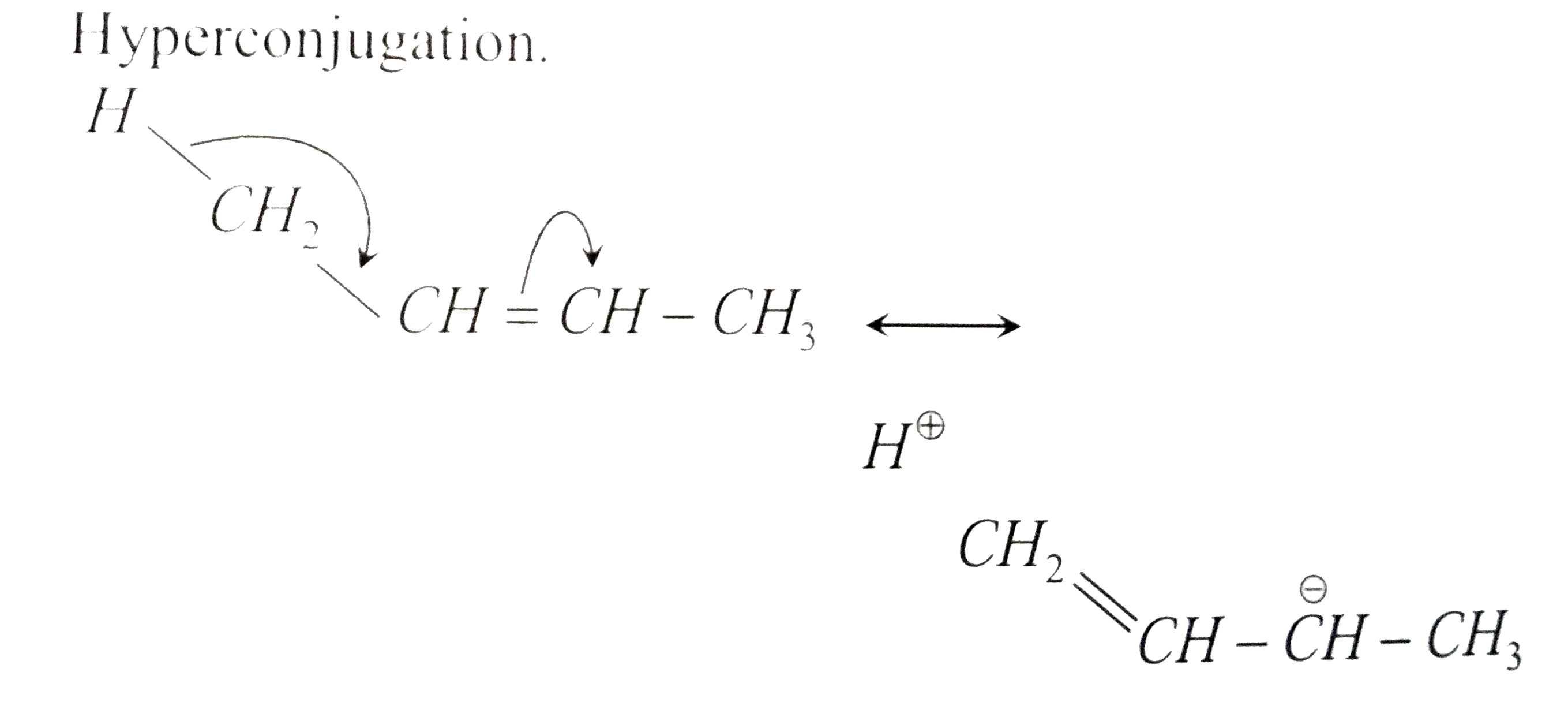The hyperconjugative stabilities of tert-butyl cation and 2-butene, respectively, are due to
A
σ→p (empty) and σ→π∗ electron delocalisations
B
σ→σ∗ and σ−→ electron delocalisations
C
σ→p (filled) and σ→π electron delocalisations
D
p (filled) →σ∗ and σ→π∗ electron delocalisations
Video Solution
Text Solution
The correct Answer is:A
H H⊕ | CH2 CH2 | ||CH3−C⊕CH3−C | | CH3 CH3
In tert-butyl cation, bearing ⊕ charge has one vacant p orbital hence it is σ- p (empty) conjugation or Hyperconjugation.

In 2-butene hyperconjugation between σ and π∗ bond.
|
Topper's Solved these Questions
- GENERAL ORGANIC CHEMISTRYBook:ERRORLESS Chapter:GENERAL ORGANIC CHEMISTRYExercise:Reasoning type questions
Explore 5 Videos
- GENERAL ORGANIC CHEMISTRYBook:ERRORLESS Chapter:GENERAL ORGANIC CHEMISTRYExercise:Comprehension type questions
Explore 6 Videos
- GENERAL ORGANIC CHEMISTRYBook:ERRORLESS Chapter:GENERAL ORGANIC CHEMISTRYExercise:JEE Section (Only one choice correct answer)
Explore 85 Videos
- GASEOUS STATE Book:ERRORLESS Chapter:GASEOUS STATE Exercise:JEE SECTION JEE (Advanced) 2018 Numeric answer type question
Explore 1 Video
- HALOGEN CONTAINING COMPOUNDBook:ERRORLESS Chapter:HALOGEN CONTAINING COMPOUNDExercise:Critical Thinking (Jee (Advanced) 2018)
Explore 1 Video
Similar Questions
Knowledge Check
The hyperconjugative stabilities of tert-butyl cation and 2-butane, respectively, are due to
Aσ to p(empty) and σ to π∗ electron delocalisationsBσ to σ∗ and σ to π electron delocalisationsCσ to p (filled) and σ to π electron delocalisationsDp(filled) to σ∗ and σ to π∗ electron delocalisationsThe hyparconjugative stabilities of tert-butyl cation and 2-butene, respectively ,are due to
Aσ→p(sigma)(empty )andσ→π*electron delocalization.Bσ→σ*andσ→π electron delocalization.Cσ→p (filled ) and σ→π electron delocalization.Dp (filled ) →σ*andσ→π* electron delocalization .The greater stability of tert-butyl carbocation than methyl carbocation can be explained on the basis of
A+I effect of the methyl groupsBelectromeric effect of the methyl groupsChyperconjugation effect of the methyl groupsD−I effect of the methyl groups.
Tert - butyl chloride is
View SolutionThe IUPAC name of tert-butyl chloride is
View SolutionIsovalent hyperconjugation explanis the stability of
View SolutionCarbonium ion of tert. butyl bromide is
View Solution(A) tert-Butyl methyl ether on cleavage with HI at 373K gives tert-butyl iodide and methanol.
(R ) The reaction occurs by SN2 mechanism.
View Solution